1. Ransom JT. Mechanism of action of mycophenolate mofetil. Ther Drug Monit. 1995; 17(6):681–684. PMID:
8588241.

2. Staatz CE, Tett SE. Clinical pharmacokinetics and pharmacodynamics of mycophenolate in solid organ transplant recipients. Clin Pharmacokinet. 2007; 46(1):13–58. PMID:
17201457.

3. Shaw LM, Korecka M, Venkataramanan R, Goldberg L, Bloom R, Brayman KL. Mycophenolic acid pharmacodynamics and pharmacokinetics provide a basis for rational monitoring strategies. Am J Transplant. 2003; 3(5):534–542. PMID:
12752309.

4. van Gelder T, Hilbrands LB, Vanrenterghem Y, Weimar W, de Fijter JW, Squifflet JP, et al. A randomized double-blind, multicenter plasma concentration controlled study of the safety and efficacy of oral mycophenolate mofetil for the prevention of acute rejection after kidney transplantation. Transplantation. 1999; 68(2):261–266. PMID:
10440399.
5. Le Meur Y, Büchler M, Thierry A, Caillard S, Villemain F, Lavaud S, et al. Individualized mycophenolate mofetil dosing based on drug exposure significantly improves patient outcomes after renal transplantation. Am J Transplant. 2007; 7(11):2496–2503. PMID:
17908276.

6. Mourad M, Malaise J, Chaib Eddour D, De Meyer M, König J, Schepers R, et al. Pharmacokinetic basis for the efficient and safe use of low-dose mycophenolate mofetil in combination with tacrolimus in kidney transplantation. Clin Chem. 2001; 47(7):1241–1248. PMID:
11427455.

7. Armstrong VW, Shipkova M, Schütz E, Weber L, Tönshoff B, Oellerich M, et al. Monitoring of mycophenolic acid in pediatric renal transplant recipients. Transplant Proc. 2001; 33(1-2):1040–1043. PMID:
11267182.

8. Weber LT, Shipkova M, Armstrong VW, Wagner N, Schütz E, Mehls O, et al. The pharmacokinetic-pharmacodynamic relationship for total and free mycophenolic acid in pediatric renal transplant recipients: a report of the German study group on mycophenolate mofetil therapy. J Am Soc Nephrol. 2002; 13(3):759–768. PMID:
11856782.

9. Borrows R, Chusney G, Loucaidou M, James A, Lee J, Tromp JV, et al. Mycophenolic acid 12-h trough level monitoring in renal transplantation: association with acute rejection and toxicity. Am J Transplant. 2006; 6(1):121–128. PMID:
16433766.

10. Gaston RS, Kaplan B, Shah T, Cibrik D, Shaw LM, Angelis M, et al. Fixed- or controlled-dose mycophenolate mofetil with standard- or reduced-dose calcineurin inhibitors: the Opticept trial. Am J Transplant. 2009; 9(7):1607–1619. PMID:
19459794.

11. van Gelder T, Silva HT, de Fijter JW, Budde K, Kuypers D, Tyden G, et al. Comparing mycophenolate mofetil regimens for de novo renal transplant recipients: the fixed-dose concentration-controlled trial. Transplantation. 2008; 86(8):1043–1051. PMID:
18946341.

12. Ham JY, Jung HY, Choi JY, Park SH, Kim YL, Kim HK, et al. Usefulness of mycophenolic acid monitoring with PETINIA for prediction of adverse events in kidney transplant recipients. Scand J Clin Lab Invest. 2016; 76(4):296–303. PMID:
26981890.

13. Jung HY, Cho SY, Choi JY, Cho JH, Park SH, Kim YL, et al. Comparison of transplant outcomes for low-level and standard-level tacrolimus at different time points after kidney transplantation. J Korean Med Sci. 2019; 34(12):e103. PMID:
30940998.

14. Rodrigo E, Segundo DS, Fernández-Fresnedo G, López-Hoyos M, Benito A, Ruiz JC, et al. Within-patient variability in tacrolimus blood levels predicts kidney graft loss and donor-specific antibody development. Transplantation. 2016; 100(11):2479–2485. PMID:
26703349.

15. Vanichanan J, Udomkarnjananun S, Avihingsanon Y, Jutivorakool K. Common viral infections in kidney transplant recipients. Kidney Res Clin Pract. 2018; 37(4):323–337. PMID:
30619688.

16. Doria C, Greenstein S, Narayanan M, Ueda K, Wiland A, McCague K, et al. Association of mycophenolic acid dose with efficacy and safety events in kidney transplant patients receiving tacrolimus: an analysis of the Mycophenolic acid Observational REnal transplant registry. Clin Transplant. 2012; 26(6):E602–11. PMID:
23121178.

17. Lee SH, Kim CD, Huh KH, Cho BH, Ju MK, Lee DR, et al. Low-dose mycophenolate mofetil in tablet form or capsule form combined with tacrolimus in the early period after kidney transplantation: a prospective randomized trial. Clin Nephrol. 2016; 86 (2016)(12):319–327. PMID:
27781419.

18. Rhu J, Lee KW, Park H, Park JB, Kim SJ, Choi GS. Clinical implication of mycophenolic acid trough concentration monitoring in kidney transplant patients on a tacrolimus triple maintenance regimen: a single-center experience. Ann Transplant. 2017; 22:707–718. PMID:
29180612.

19. Cattaneo D, Cortinovis M, Baldelli S, Bitto A, Gotti E, Remuzzi G, et al. Pharmacokinetics of mycophenolate sodium and comparison with the mofetil formulation in stable kidney transplant recipients. Clin J Am Soc Nephrol. 2007; 2(6):1147–1155. PMID:
17928466.

20. de Winter BC, van Gelder T, Glander P, Cattaneo D, Tedesco-Silva H, Neumann I, et al. Population pharmacokinetics of mycophenolic acid : a comparison between enteric-coated mycophenolate sodium and mycophenolate mofetil in renal transplant recipients. Clin Pharmacokinet. 2008; 47(12):827–838. PMID:
19026038.
21. Weber LT, Shipkova M, Lamersdorf T, Niedmann PD, Wiesel M, Mandelbaum A, et al. Pharmacokinetics of mycophenolic acid (MPA) and determinants of MPA free fraction in pediatric and adult renal transplant recipients. German study group on mycophenolate mofetil therapy in pediatric renal transplant recipients. J Am Soc Nephrol. 1998; 9(8):1511–1520. PMID:
9697675.

22. Atcheson BA, Taylor PJ, Kirkpatrick CM, Duffull SB, Mudge DW, Pillans PI, et al. Free mycophenolic acid should be monitored in renal transplant recipients with hypoalbuminemia. Ther Drug Monit. 2004; 26(3):284–286. PMID:
15167629.

23. Soldin OP, Mattison DR. Sex differences in pharmacokinetics and pharmacodynamics. Clin Pharmacokinet. 2009; 48(3):143–157. PMID:
19385708.

24. Jones H, Talwar M, Nogueira JM, Ugarte R, Cangro C, Rasheed H, et al. Anemia after kidney transplantation; its prevalence, risk factors, and independent association with graft and patient survival: a time-varying analysis. Transplantation. 2012; 93(9):923–928. PMID:
22377790.
25. Shaw LM, Korecka M, Aradhye S, Grossman R, Bayer L, Innes C, et al. Mycophenolic acid area under the curve values in African American and Caucasian renal transplant patients are comparable. J Clin Pharmacol. 2000; 40(6):624–633. PMID:
10868313.

26. Pescovitz MD, Guasch A, Gaston R, Rajagopalan P, Tomlanovich S, Weinstein S, et al. Equivalent pharmacokinetics of mycophenolate mofetil in African-American and Caucasian male and female stable renal allograft recipients. Am J Transplant. 2003; 3(12):1581–1586. PMID:
14629290.

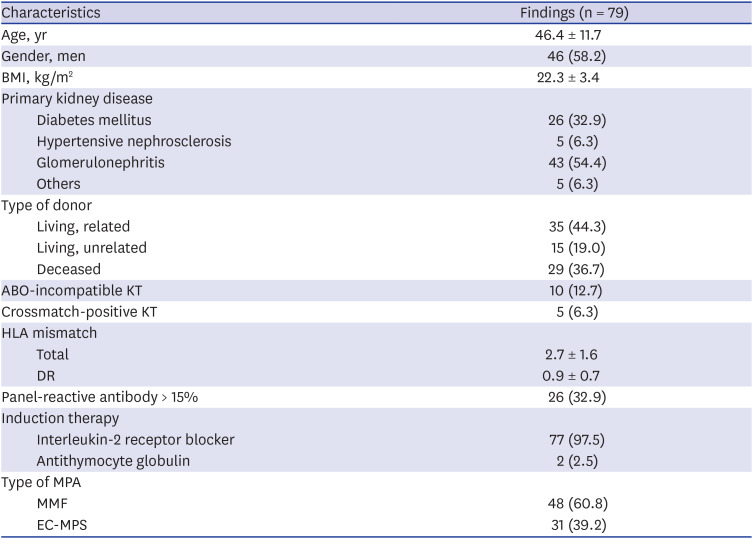
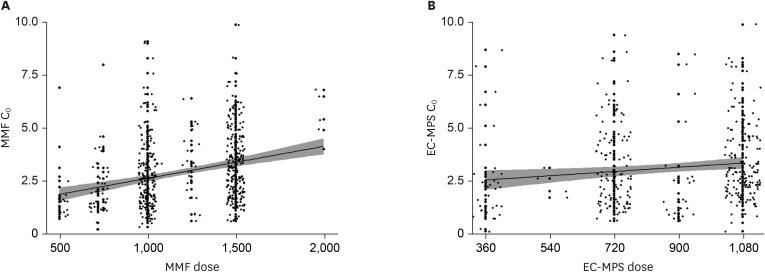
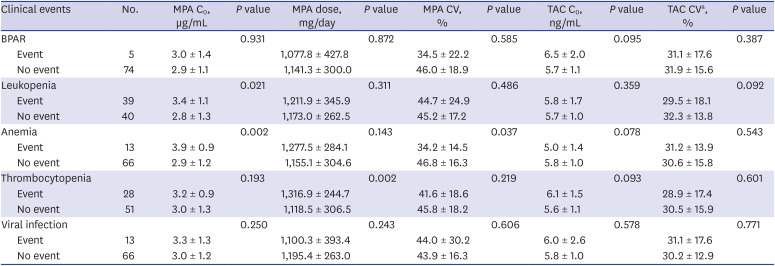

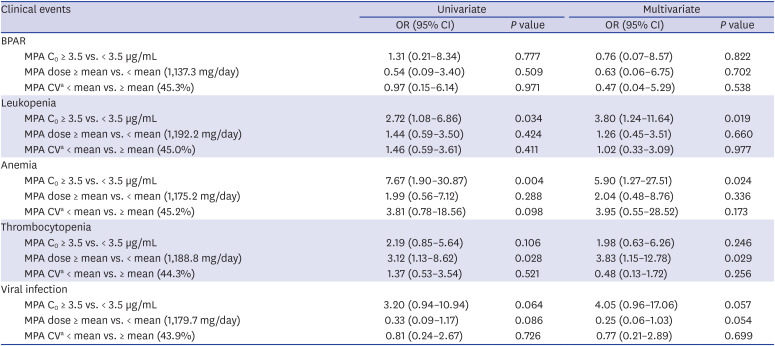





 PDF
PDF Citation
Citation Print
Print



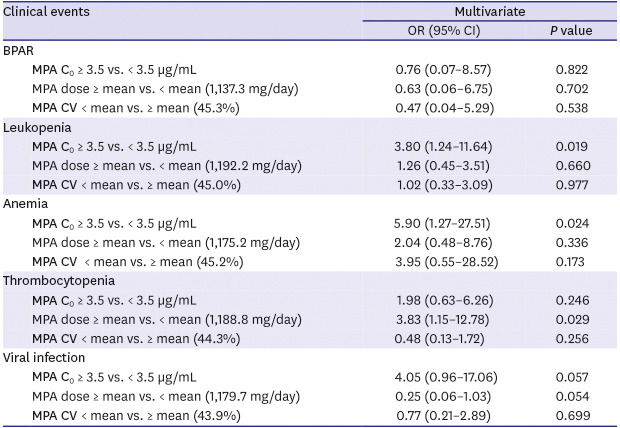
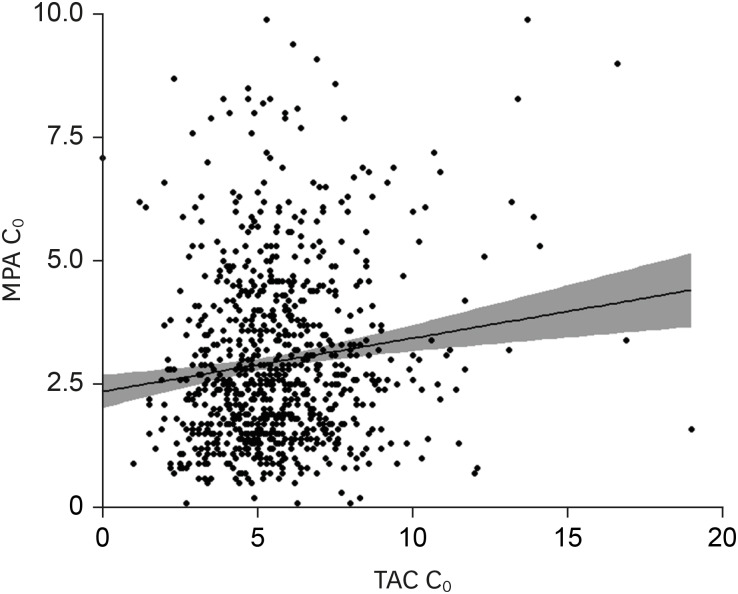
 XML Download
XML Download